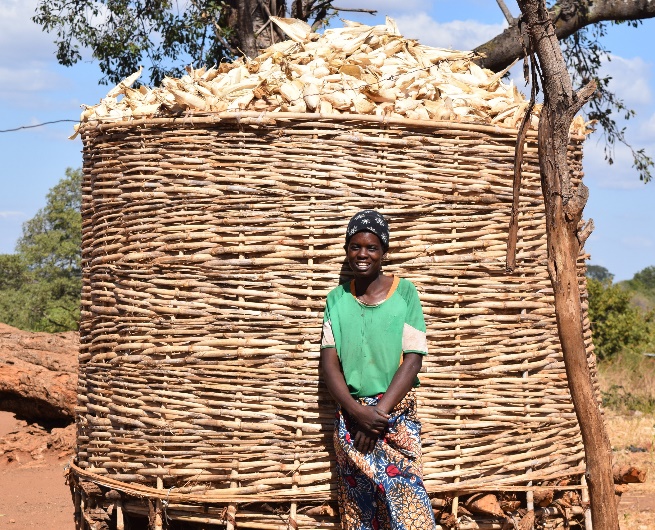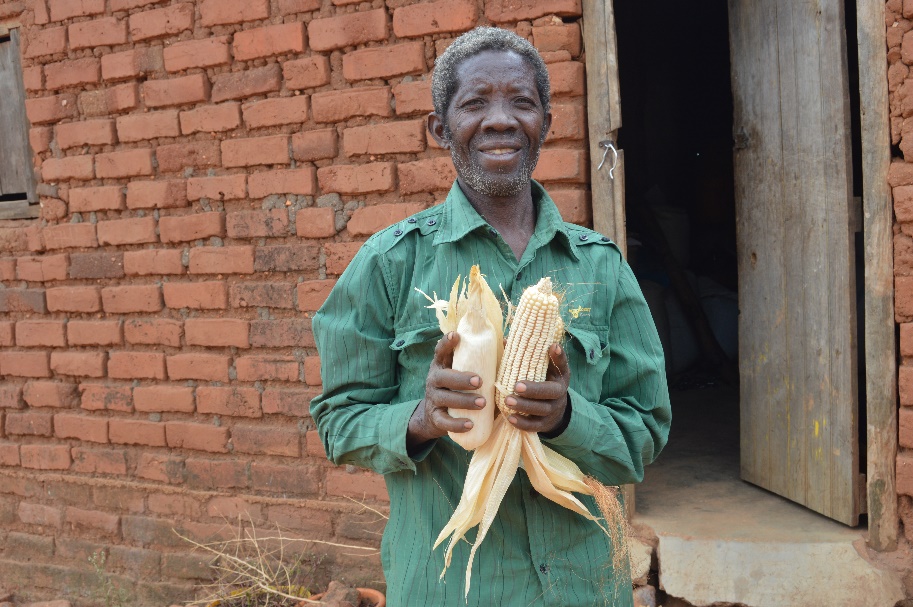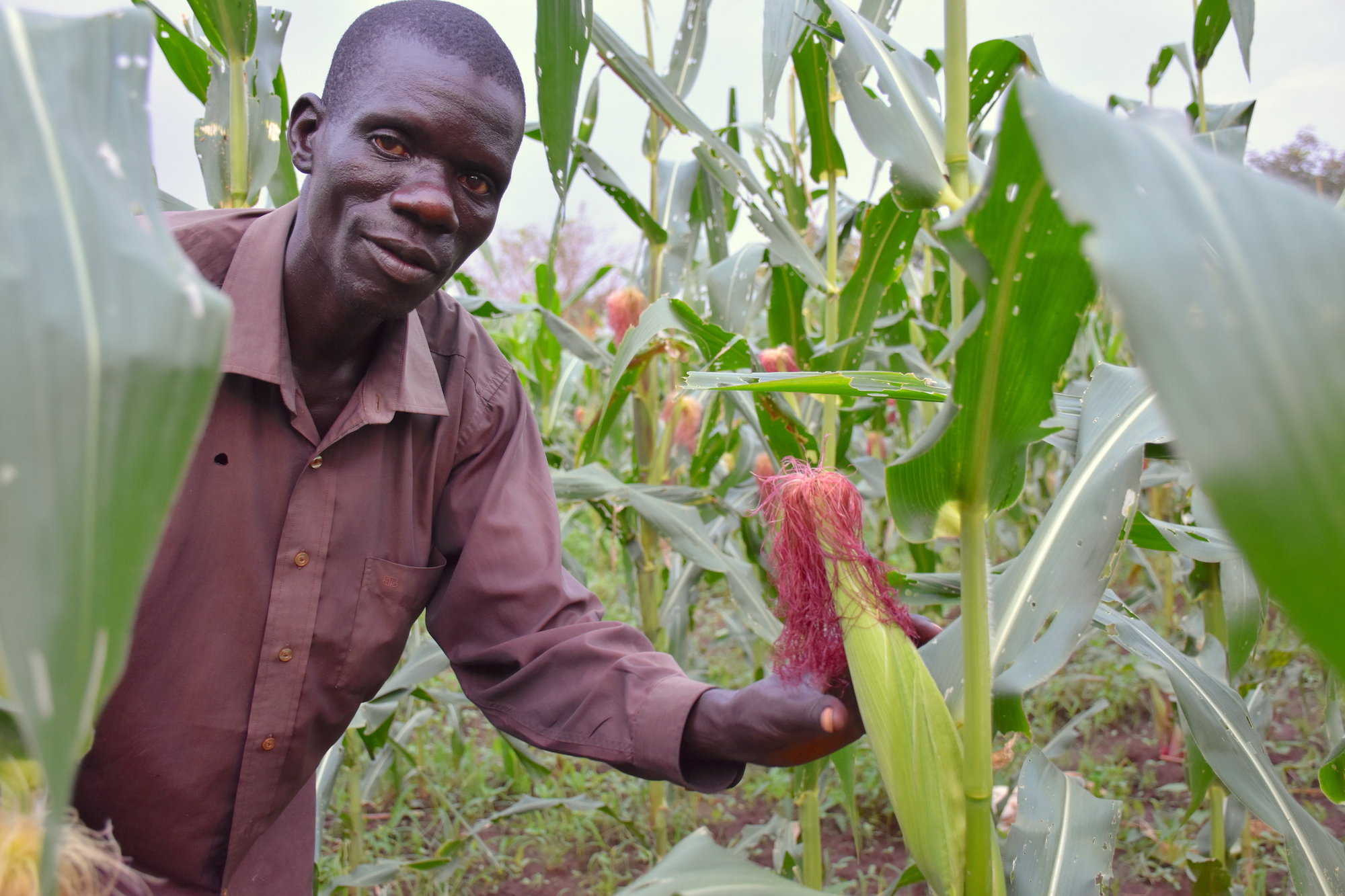
NAIROBI, Kenya (CIMMYT) – Drought-related challenges in Africa call for proactive interventions rather than reactive ones. Every so often a drought hits, jolting the development community into action, and leading to the delivery of food aid to millions of people facing starvation — beneficial efforts in the short term, but futile for achieving lasting change.
The need for sustainable strategies that guarantee households remain food secure even when natural disasters strike is widely recognized throughout the international agriculture-for-development community and supported by the U.N. Sustainable Development Goals.
CIMMYT plays a significant role in supporting these efforts in Africa by developing drought-tolerant (DT) maize and wheat seeds that give smallholder farmers long-term solutions to recurring drought. Drought-tolerant maize varieties are scaled out through the Drought Tolerant Maize for Africa Seed Scaling (DTMASS) project.
The drought that has gripped much of southern Africa during the 2015/2016 agricultural season due to a disruptive El Niño went on record as the worst in 50 years, affecting an estimated 40 million people. While Malawi, Mozambique and Zimbabwe declared the drought a national disaster, Zambia managed to meet its national maize production average, thanks largely to smallholder farmers, who plant roughly 51% of the total cultivated land in the country.
As in most countries in sub-Saharan Africa, in Zambia rain performance determines crop performance; however, despite the late and erratic rains in 2015-2016, smallholder farmers have reason to smile. This good fortune is evident in Petauke district in Zambia’s Eastern Province, roughly 400 kilometers (250 miles) from the capital Lusaka, where granaries are packed to the brim thanks to the bountiful maize harvest.
At the recommendation of a fellow farmer, 36-year-old Miriam Piri, a mother of six, started planting a DT maize variety in 2013 under the Drought Tolerant Maize for Africa project. Realizing she was getting a bigger yield from the DT variety than a local one, Miriam continued to plant it.
“I grow DT maize variety PAN53 on roughly two hectares of land, and for the last three years my yields have been impressive,” said Piri. “I was a little anxious about my harvest because of poor rains, but I got the highest yield ever in three years!”
For its ability to thrive in both dry and wet conditions, and in low- to mid-altitude regions, PAN 53 is easily one of the most popular DT varieties in Zambia. In addition to its impressive yields, farmers enjoy the hybrid’s flint-type grain, which makes for easier and quicker pounding, and its densely packed cobs, which add up to more grain. PAN 53 is also resistant to leaf blight, gray leaf spot and ear rot.
Every season Piri plants 40 kilograms (90 pounds) of PAN 53, from which she harvested 45 50-kg bags in 2013. This was followed by yields of 35, 50 and 70 bags in 2014, 2015 and 2016, respectively.

PAN 53 is produced and distributed by Pannar, the largest independent seed group in South Africa, and one of the largest seed suppliers in sub-Saharan Africa. Pannar has the third largest market share in Zambia.
According to the Famine Early Warning Systems Network, Zambia is expected to substantially exceed national requirements this consumption year given its maize production of 2.87 million metric tons (MT) in 2016, combined with an estimated maize carryover stock of approximately 667,500 MT.
A few doors down from Piri is 66-year-old Piri Mwanza, who also plants DT maize. For Mwanza, planting a DT maize hybrid at the onset of this year’s drought was a risk he was willing to take. Throughout 44 years as a farmer, he knew only the local maize variety until an agro-dealer convinced him to try something new. He invested $37 to buy 20 kilograms of DT maize seed and fertilizer for his one-hectare farm. Despite poor rains, he harvested 55 bags of maize compared to 40 bags the previous year with the local variety.
“I’m impressed with my harvest, and will continue investing in DT maize even when the season gets better and the rains normalize,” said Mwanza.
Planting drought-tolerant varieties has proven to be a sustainable strategy for improving food security. Continuous efforts by CIMMYT’s DTMASS project to promote the benefits of improved varieties will go a long way toward convincing smallholder farmers to adopt them.
 Nutrition, health and food security
Nutrition, health and food security 